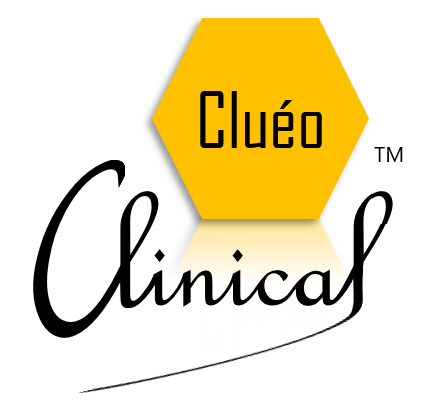Your cart is currently empty!
Securing a job interview invitation can be challenging especially if you want to break into a new industry, having a structured approach to answering questions can significantly enhance your chances of success. One such proven method is the STAR technique (Situation, Task, Action, Result). This article explores the effectiveness of the STAR method and how you could use it effectively to elevate your interview performance. We provide a step-by-step guide for you to make a lasting impression on prospective employers.

What is STAR?
The STAR method is a powerful interview strategy designed to help candidates provide comprehensive and structured responses to behavioural questions. It involves breaking down your answer into four essential components: Situation, Task, Action, and Result.
How to Implement STAR
1. Situation:
Begin your response by setting the stage. Describe the context of the situation, highlighting the key details without delving into unnecessary specifics. This sets the foundation for a clear and focused narrative.
Let’s consider a hypothetical example to apply the STAR method.
Situation: “During my time as a Clinical Research Coordinator at XYZ Pharmaceuticals, I was tasked with managing a Phase III clinical trial for a novel cancer treatment. The trial involved multiple investigational sites across different regions, each with its unique challenges and patient populations.“
2. Task:
Identify the specific task or challenge you were confronted with. Clearly articulate your responsibilities and what was expected of you in that particular situation. This demonstrates your understanding of your role and the goals you aimed to achieve.
Your Task for the above hypothetical situation would be “My responsibility was to ensure seamless coordination between the sponsor, principal investigators, and site staff to guarantee protocol adherence and data quality.“
3. Action:
Detail the actions you took to address the task or challenge. Emphasize your skills, decision-making process, and any innovative approaches you employed. This section allows you to showcase your competencies and problem-solving abilities.
Your Action for the above hypothetical situation and task would be “Amidst the trial, a significant challenge emerged when one investigational site encountered unforeseen delays in patient recruitment due to logistical issues. This posed a threat to the trial timeline. Recognizing the urgency, I proactively collaborated with the site staff, identified the root causes of the delays, and implemented a targeted recruitment strategy.“
4. Result:
Conclude your response by highlighting the positive outcomes of your actions. Quantify results whenever possible, emphasizing how your contributions had a tangible impact. This provides concrete evidence of your effectiveness in similar situations.
Your Result for the above hypothetical situation, task and action would be “As a result of these actions, the site swiftly recovered from the setback, surpassing recruitment targets, and enabling the trial to meet its milestones within the specified timeframe. This experience highlighted my ability to navigate challenges and implement effective solutions in a dynamic clinical research environment.“
When to use the STAR method during an interview
The STAR method is particularly effective when responding to behavioural interview questions that prompt you to provide specific examples of your past experiences. These questions often begin with phrases like “Tell me about a time when,” “Give me an example of,” or “Describe a situation where.” Below are some examples of interview questions where the STAR method can be applied:
- Tell me about a time when you had to deal with a challenging situation at work.
- STAR Response: Situation: Briefly describe the challenging situation. Task: Explain your specific role and responsibilities. Action: Detail the steps you took to address the challenge. Result: Share the positive outcomes or what you learned from the experience.
- Can you provide an example of a project where you had to work collaboratively with a diverse team?
- STAR Response: Situation: Set the stage for the collaborative project. Task: Outline your role within the diverse team. Action: Describe the collaborative steps you took. Result: Share the project’s success or the positive impact of your teamwork.
- Describe a situation where you had to meet a tight deadline.
- STAR Response: Situation: Describe the project or task with a tight deadline. Task: Explain your role and the importance of meeting the deadline. Action: Detail the specific steps you took to ensure timely completion. Result: Share the successful outcome or what you learned from the experience.
- Give me an example of a time when you had to adapt to a significant change in the workplace.
- STAR Response: Situation: Outline the significant change in the workplace. Task: Explain how the change affected your role or responsibilities. Action: Describe the adaptive strategies you employed. Result: Share the positive outcomes or lessons learned from adapting to the change.
- Tell me about a situation where you had to resolve a conflict within your team.
- STAR Response: Situation: Briefly describe the conflict within the team. Task: Explain your role in addressing the conflict. Action: Detail the steps you took to resolve the conflict. Result: Share the positive outcomes or improvements in team dynamics.
Check out the top 10 most challenging interview questions and how to craft winning responses.
Why Employers Value STAR Responses
1. Demonstrates Competency:
The STAR method allows you to clearly demonstrate your competencies and skills relevant to the position, providing tangible evidence of your capabilities.
2. Structure and Clarity:
Employers appreciate candidates who communicate effectively. The STAR method ensures your responses are structured, focused, and easy to follow.
3. Predicts Future Performance:
By showcasing past successes and how you approached challenges, employers gain insight into how you might perform in similar situations within their organization.
Conclusion:
Mastering the STAR method is a valuable skill for aspiring professionals aiming to make a strong impression during interviews. By incorporating this structured approach, you not only provide comprehensive and engaging responses but also set yourself apart as a candidate who understands the importance of effective communication and problem-solving. Practice incorporating the STAR method into your interview preparation, and watch as your responses become compelling narratives that resonate with potential employers.
You’ll receive professional career support to pass your industry interviews as part of our all inclusive Industry-Bridging Programs.
Want more tips and strategies on how to enter the clinical research industry? Subscribe to our newsletters or follow us on LinkedIn.
If you are not sure what to do, contact us via email at info@clueoclinical.com or call us at 1300 39 22 06 for an obligation-free discussion.
Ready to take your career to the next level? Click HERE to ENROLL NOW in our Industry-Bridging Programs (IBPs).

Dr. Thu (Sue) Nguyen, PhD
Sue is the founder and CEO of Clueo Clinical Pty Ltd. She has over 17 years of combined experience in clinical and pre-clinical research and development, training and management. She is passionate about patient-centric science, clinical research, education, and helping others find their career passion and succeed in life.
She is an avid learner, an authentic networker and wants to empower the next generation to reach their fullest potential in Australia and around the world.



